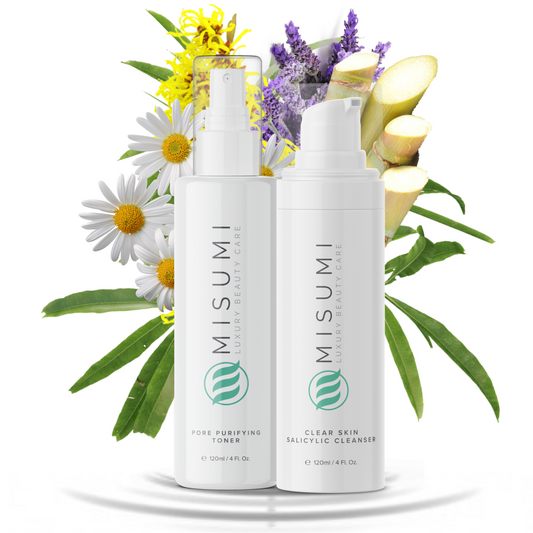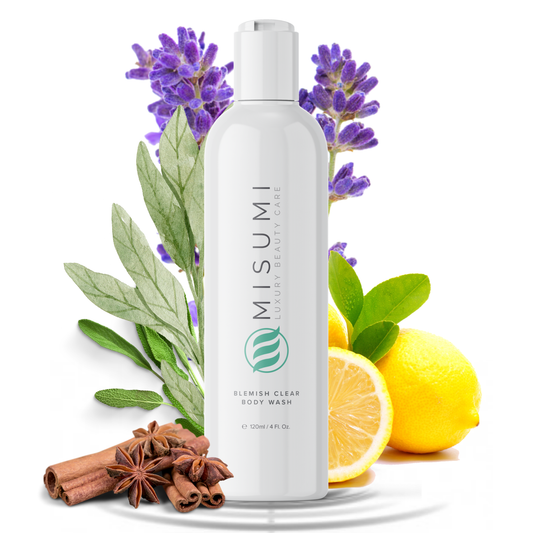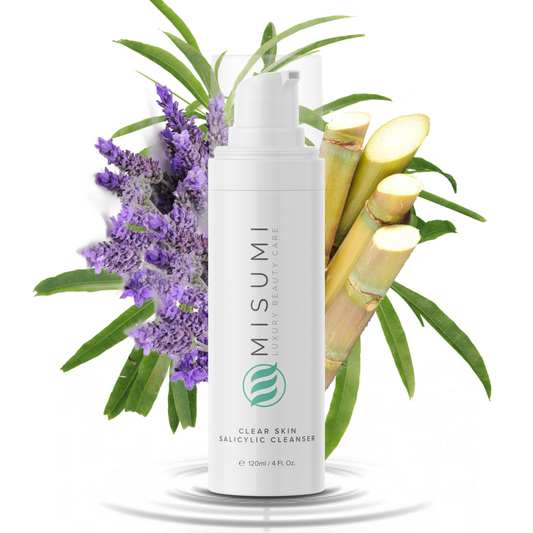If you’re keeping up with all the popular skin treatments, then you must’ve come across microdermabrasion. It seems that everyone is raving about it, but how effective is it in reality?
If you’ve had any questions or concerns regarding the treatment, then this is the place for you! Keep reading for the ultimate guide to microdermabrasion.
What is Microdermabrasion?
Microdermabrasion is an extremely popular skincare treatment which gently exfoliates the skin and brings healthier layers of skin to the surface.
How Does Microdermabrasion Work?
When it comes to the process itself, it basically consists of tiny crystals which are sprinkled gently on your skin using a machine in order to remove the outermost layer of skin called the epidermis. In addition, it also has a vacuum-like effect, which sucks the dead skin cells, revealing healthy and rejuvenated skin underneath.
This provides mild exfoliation for the skin, without being too harsh. Some microdermabrasion machines even have a built-in feature that applies some sort of topical treatment on the skin during the microdermabrasion process, one that’s suitable for the patient. This allows for quicker and more effective results.
Microdermabrasion is not as aggravating as other similar skin treatments such as dermabrasion, and therefore it doesn’t require any numbing creams or shots. What’s more, it has a faster recovery time than any other more serious skin treatments and is quite low risk.
Whom Is Microdermabrasion Suitable for?
Luckily, microdermabrasion is suitable for all skin types. So, it doesn’t matter if you have oily, dry or sensitive skin, everyone is likely to benefit from trying out this treatment.

So, how to find out whether you’re the perfect candidate for microdermabrasion? There are a few signs you should look out for. This treatment works wonders for people with dull-looking and lifeless skin, or for people who suffer from mild acne, acne scars, and hyperpigmentation.
However, if you have severe scarring and acne then microdermabrasion might not be suitable for you. If you suffer from severe scarring, your best bet is to go for a more aggressive treatment such as a chemical peeling, laser treatment or dermabrasion.
Types of Microdermabrasion
There are two types of microdermabrasion, and while both of them provide similar outcomes, they differ in the technique they use. The two types of microdermabrasion are crystal microdermabrasion and diamond microdermabrasion. Crystal microdermabrasion is the more common form of the two. It basically consists of small crystals which are sprayed onto the skin in order to provide gentle exfoliation. In the meantime, the vacuum sucks up any dirt or bacteria from the skin.

The crystals can be made of several ingredients, but the most commonly used are salt, baking soda, and aluminum oxide.
Diamond microdermabrasion, just like the name suggests, uses a diamond tip instead of crystals. It performs the same function as the crystals – it exfoliates the skin and vacuums the particles which come up on the skin. Some dermatologists claim that this type of microdermabrasion is safer than the other. But, as long as you have a good doctor, you will be fine with either of them.
Whichever one you go for will depend largely on you and your preferences. Since both of them result in the same effect – refreshed, healthier and more elastic skin, there really isn’t a wrong choice in this case! Diamond microdermabrasion is not available everywhere, so that might impact your decision.
Benefits of Microdermabrasion
We’ve already talked about the exfoliating benefits of microdermabrasion. But is there more to it than that? There are a few benefits that come with microdermabrasion you probably weren’t aware of.
One of the biggest struggles we face in regards to our skin is enlarged pores. There are so many creams, gels, and primers on the market which claim to hide their appearance and size. But what if I told you that there’s actually a way to reduce their size for good? Microdermabrasion can work wonders in shrinking pores. It helps to unclog any blocked areas, which, in turn, improves circulation and reduces overall inflammation.
While we’re on the subject of circulation, microdermabrasion treatments can improve blood flow drastically. You might be wondering how increased blood flow can impact the appearance of your skin. By improving blood flow, more oxygen and nutrients are transported over to the cells. This makes your skin more youthful in the long run and elastic.

As far as skin tone and texture are concerned, you should start to see improvements after a couple of treatments. Your skin will be healthier, brighter and evened out. If you have any hyperpigmentation or acne scarring, you will notice that the affected areas are brighter and smoother.
Although it can’t do much in severe cases of acne, it can effectively protect against the formation of mild acne. In most cases, it will also reduce the amount of oil which the skin produces.
Microdermabrasion can also improve the appearance of fine lines and wrinkles, as well as protect against premature signs of aging. This is because it stimulates the production of collagen, which is responsible for keeping the skin youthful and firm. In addition, collagen also stimulates skin regeneration. The amount of collagen our skin produces decreases as we age. There are multiple ways to boost collagen production, and microdermabrasion is one of the quickest and easiest ways to do so. Increased collagen production reduces the chances of any premature signs of aging, and with microdermabrasion treatments, it’s easier than ever before.
Microdermabrasion Acne Reviews
Everyone’s skin will react differently to microdermabrasion. For some, it’s the best thing they’ve ever done for their skin and would recommend it to anyone. These are the kind of people who’ve reacted exceptionally well to the treatment and saw improvements even after the first session.

Although their skin was initially red/pinkish after the treatment, the redness reduced after a couple of days. They report seeing drastic changes in terms of the size and intensity of their acne scars and marks. So, if you do fall under this category after getting the treatment, then consider yourself lucky!
Some people claim that getting microdermabrasion was the worst thing they have ever done for their skin. It’s important to note that these reactions are quite rare, so they shouldn’t scare you into not getting it done. For them, not only did microdermabrasion prove to be ineffective in healing and exfoliating the skin, but they claim that it made their conditions worse and resulted in many breakouts, including cysts and papules. This outcome is clearly undesirable and can be very costly for the patients.
There is also a third category of people whose response to microdermabrasion is slightly neutral. Yes, they do see results from the treatment, but it takes them from 7 to 10 sessions to do so, which can be discouraging, especially for those who are impatient for a cure or improvement.
Remember, your skin recovery isn’t always smooth sailing and there will be times when you want to quit, but the end result is definitely worth it. Therefore, don’t let the amount of time some treatment is going to take to produce significant results discourage you from trying out the treatment. The time will pass anyway, but once your skin has improved you will be really glad you stuck to it.
Best Microdermabrasion for Acne Scars
Acne scars are often a product of a prolonged struggle with acne or improper treatment of acne. It’s an incredibly hard skin condition to deal with, but luckily there are a lot of treatment options out there which can be really successful if approached correctly. Microdermabrasion is one of the most effective options for acne scars. We’ve already discussed the benefits from microdermabrasion for acne scars, but which kind of microdermabrasion is best for treating acne scars?

The truth is, any option you choose – whether it’s crystal microdermabrasion, diamond microdermabrasion or even at-home kits, any option can improve the appearance of acne scars. There is no one preferable kind when it comes to treating acne scars. Whether you go to a spa, a dermatologist office or do it at home by yourself, there are many testimonials from people who’ve gotten rid of acne scars using each of these options.
All of them offer quick recovery time and are very safe and painless to do.
However, you should keep in mind that microdermabrasion isn’t very effective when it comes to ice pick scars, so if you suffer from those you should look into another treatment.
Before You Get Microdermabrasion
Assuming you’re interested in trying this treatment, you should be aware of the process that precedes the treatment itself.

Firstly, you’ll need to consult with a dermatologist or somebody who specializes in skin treatments. During the consultation, your doctor or professional will ask you for your skin history, they will examine your skin type, inform you about all the details and advise you on the best options for your skin.
After You Get Microdermabrasion
We’ve discussed what your consultation regarding microdermabrasion will consist of, now let’s look at what follows the treatment and what’s the best aftercare advice.
You don’t need to worry about taking any rest days since microdermabrasion allows you to get back to your daily routine immediately after the treatment. When it comes to the skin, it will likely be pink or reddish and will feel rather dry and tight. This feeling will last for 24 hours after the treatment. Later on, your skin will start its healing process and will gradually get back to its normal state.
Your dermatologist will probably mention the importance of applying a good quality moisturizer after the procedure, as well as using gentle skincare products. This step is crucial for a speedy recovery. Some doctors might advise against using makeup 24 hours after you’re done with the treatment because your skin will still be fragile and makeup contains a lot of chemicals.
How Often Should You Have Microdermabrasion?
Those of you who are eager for fast results, you’re in luck! Microdermabrasion can be done weekly if your skin’s reaction to the treatment allows that. For other patients, dermatologists might schedule the next session up to eight weeks after the initial one. What happens most often is that patients start off with doing weekly sessions and then reduce the number of sessions after a couple of weeks.
When it comes to the total amount of microdermabrasion sessions you will have, it largely depends on the severity of your skin condition. Some might see an improvement after as little as two sessions, while others might need more in order to notice a significant change in their skin texture. Usually, the number of recommended sessions ranges from six to ten and the number varies from individual to individual.
Does Microdermabrasion Hurt?
One of the most commonly asked questions which dermatologists get is whether or not microdermabrasion is painful. It’s only natural to be concerned about this since you will have a machine sucking the gunk that’s sitting under your skin while shedding off dead skin cells for quite some time.

Gruesome imagery aside, microdermabrasion usually doesn’t hurt. What you might feel is slight discomfort during the treatment, but it’s very manageable.
You might have heard some horror stories about people getting extreme redness and bruising after the treatment, which is probably where most concerns lie. Yes, you might experience some bruising if your skin is overly sensitive, but it goes away after a while.
At-home Microdermabrasion
If you don’t like going to a professional for skin treatments, then you’re in luck! Nowadays, there are many microdermabrasion kits available on the market. These are very safe and easy to use. You can experience all the joys microdermabrasion has to offer in the comfort of your own home!
There are many upsides to using these at-home kits. You can save money and time and you don’t have to wait for an appointment at the dermatologist.
When it comes to the cost of at-home kits, they’re mostly within the price range of $30-$90 per kit. Some brands might be more expensive than that and could cost more than $100.
Make sure to read the instructions carefully before using at-home microdermabrasion kits.
How Much Does Microdermabrasion Cost?

The cost of microdermabrasion treatments depends largely on where you get them done. Some places are more expensive than others, especially if you’re looking into scheduling an appointment in a big city.
There are places which charge over $300 for a single session, while others are less than $150. Keep in mind that, for most people, it’s best to get multiple treatments in order to have the best results. So the cost does add up.
Your skin is an important investment, after all, and it’s up to you to decide the amount of money you’re willing to spend on it.
Are There Any Side Effects of Microdermabrasion?

The side effects which may occur after microdermabrasion are very minimal since it’s a relatively safe and painless procedure. However, there are a few side effects which you should be aware of prior to starting the treatment. These side effects include:
- Redness/change in skin color immediately after the treatment
- Temporary scars
- Bruising
- Swelling
- Irritation (especially the eye area)
- Cold sores
- Infection
It’s normal for your skin to feel tight and dry after the procedure and this isn’t indicative of any side effects.
A Word of Caution
It’s advised not to drink any alcohol 48 hours after the procedure. Smoking is also not recommended.
In addition to this, you should avoid aspirin or any medication that contains aspirin and ibuprofen a week after the treatment.
It goes without saying that you should do your best to avoid exposing your skin unnecessarily to the sun. Wear caps in order to keep the sun away from your face and always use sunscreen that contains at least SPF 50. Keep applying sunscreen every half an hour or so. Moisturize your skin with a gentle moisturizer, preferably one that’s prescribed to you by your dermatologist.

Avoid using makeup on your face the day of and one day after you’re done with the treatment.
If you’re taking Isotretinoin (brand names Accutane and Roaccutane), or if you’ve taken Isotretinoin in the past twelve months, it’s probably not a good idea to do this treatment. You should wait until at least one full year has passed after you’ve gone off the medication in order to try out more abrasive skin treatments such as microdermabrasion and chemical peels. This way, you won’t risk scarring or any other complications that can happen as a result.
Conclusion
No matter which skin condition you suffer from, whether it’s acne, scarring, hyperpigmentation, or you’re just looking into repairing the skin on a deeper level and managing signs of aging, you could benefit from doing microdermabrasion.
It’s a relatively noninvasive treatment, it doesn’t require much downtime and, for some people, the improvements in their skin start to show right after the first treatment. Not to mention, it’s painless and quick too.
You should keep in mind that doing research is one of the most important things when it comes to trying out more aggressive skin treatments. That way, you’re informed about what you’re getting yourself into, what the cost will be approximately, how to prevent any complications or side effects and how to make sure the process goes as smoothly as possible. Hopefully, you found this ultimate guide to microdermabrasion helpful and good luck with your treatments.









